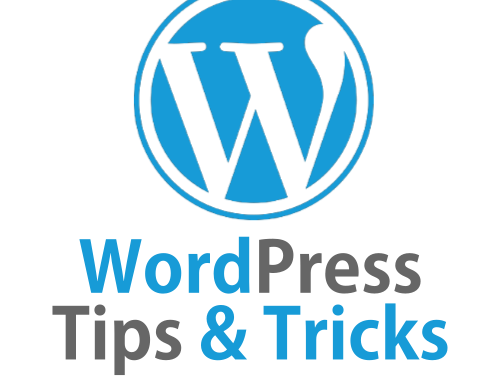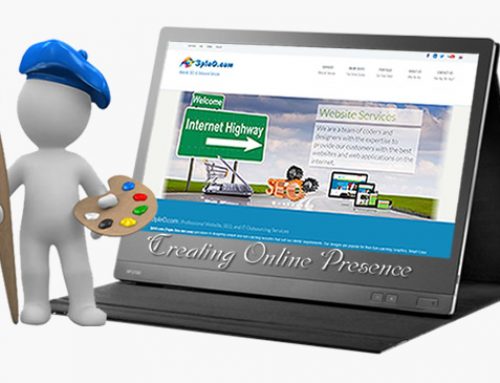In our previous 2 articles we showed you how to choose a domain name and then how to choose a hosting provider.
In this article we tell you how to choose which content management system, or CMS, to display your website.
Gone are the days of hand coded websites. No longer do you need to struggle with basic coding issues such as closing DIV or TD tags to make sure your pages display properly. Now with a few clicks you can launch a fully functional website in just a matter of minutes.
A Brief History of Content Management Systems
Before blogging became popular, CMS systems were primarily used by businesses to manage their internal data, while some websites were done using proprietary CMS systems.
In fact, that is what most content management systems were in the early days – proprietary closed-source systems designed to satisfy a specific need.
I remember when I started blogging a dozen years ago. A buddy and I hand coded our articles. We didn’t know what a CMS was, or even where to find one to use.
Around that time I became aware of a few options, but having my SEO background I realized that most CMS systems were inadequate for search engines. I did find one, however, called Moveable Type, which actually published the pages for you. That was leaps and bounds ahead of what we were doing, so we used that system for years until the other CMS systems caught up.
What is a CMS?
A CMS is a content management system. It provides an easy and unified way to display the pages on your site. A CMS also usually has built in tools that make it easy to manage the content on your site, so that you don’t have to learn HTML or coding to build your pages.
While there are literally hundreds of different CMS systems out there today, this article focuses on the three most popular: Drupal, Joomla and WordPress. All three have different features and benefits depending on what you wish to do with it.
Option #1 – Drupal
Drupal became an open source program around the turn of the century and has gained quite a following. It was one of the first CMS systems available to most anyone to use. I remember when Drupal came out – it was very bare bones but it was a true “free” (GNU licensed open source) CMS system.
Back then I found it very cumbersome and difficult to use. It has come a long way since then however.
Option #2 – WordPress
WordPress also has been around for a long time and actually comes in 2 “flavors”. You can self-host your own version of WordPress, which you download and install on your server. Or you can set up a site on WordPress.com and get the same features and benefits of a self-hosted website. A self-hosted version of WordPress gives you more control over your site, but the hosted version is a little easier to work with. While you have most customization options with the self-hosted version, the hosted version can offer peace of mind and stability.
Option #3 – Joomla
Joomla is the newest of the 3 CMS systems. It is a fork of the Mambo CMS system which I also tried out “back in the day” but it too I felt was cumbersome and offered way more than I needed to manage my simple blog. Joomla came about because of a disagreement over control of the Mambo system.
Installing a CMS
The setup of these 3 systems is very similar – you need hosting (obviously), the ability to set up and connect to a MySQL database (preferred, but some hacking can be done to run these on a Microsoft Database for example), and PHP support as all 3 are written in PHP.
Each system has a web based installer. Once you upload the files to your host, you run through a series of steps via a web interface to complete the installation.
In fact, many CMS systems use this same process. Upload the files, set up the database and complete the installation.
Configuring the CMS
This is where the biggest differences lie with these systems. WordPress is by far the easiest to use and configure while Drupal is the hardest. Joomla falls somewhere in between.
For example, WordPress templates are generally highly customizable and there are also literally thousands of free design templates to choose from while changing basic things like header images can be difficult for both Joomla and Drupal.
Plus, adding pages or blog entries is very simple in WordPress – simply select what type of page it is (page or post), type the content into the WYSIWYG editor, name it and publish it.
With Joomla and Drupal there are other options such as adding menu navigation, URL aliases and other options which could confuse and overwhelm some users.
So which is the best?
Well this is where the differences really come out. Determining the “best” CMS really depends on what you want to do with it.
WordPress is simple and lightweight. It is easy to configure and will work for most people who just want a website with a built in blog.
Drupal is a more complex site management system that offers more than simply publishing web pages. It is very robust and can manage multiple users and offers the most secure system of the 3.
Joomla falls somewhere in between. It is a larger and more complex system than WordPress, but also easier to use than Drupal.
Which is my choice?
Personally I prefer WordPress. One may ask why I’d choose the “least secure” of the three, but in reality I think it is the least secure because so many people use it that hackers can’t help but attempt to find and exploit weaknesses. On the other hand, when they find these weaknesses the developers find ways to fix them, creating a more stable platform in the end.
I find for most website owners WordPress is the better option provided they keep up on the updates, install only highly rated plugins and don’t do a lot of heavy customization.
While Drupal is more secure, it is also much more difficult to configure and use on a daily basis. I don’t mind Joomla, but again, for the average site owner it also has too much to offer.
So my recommendation is WordPress – easy to set up, customize and use on a day-to-day basis. Plus you generally don’t need to know a lot of coding to use it.
This is because there are lots of templates out there –many of which allow you to further customize them by uploading logos, changing colors and even re-ordering page items. Plus many templates allow you to choose what layout you want per-page, rather than simply applying one template design for the whole site.
The widget system in WordPress is also much easier to use as it is drag-and-drop, so you can easily reorder the items displayed in your sidebar.
But, as I said, you need to at least log into your wordpress admin area weekly and perform updates. This helps ensure your system is as secure as it can be.






